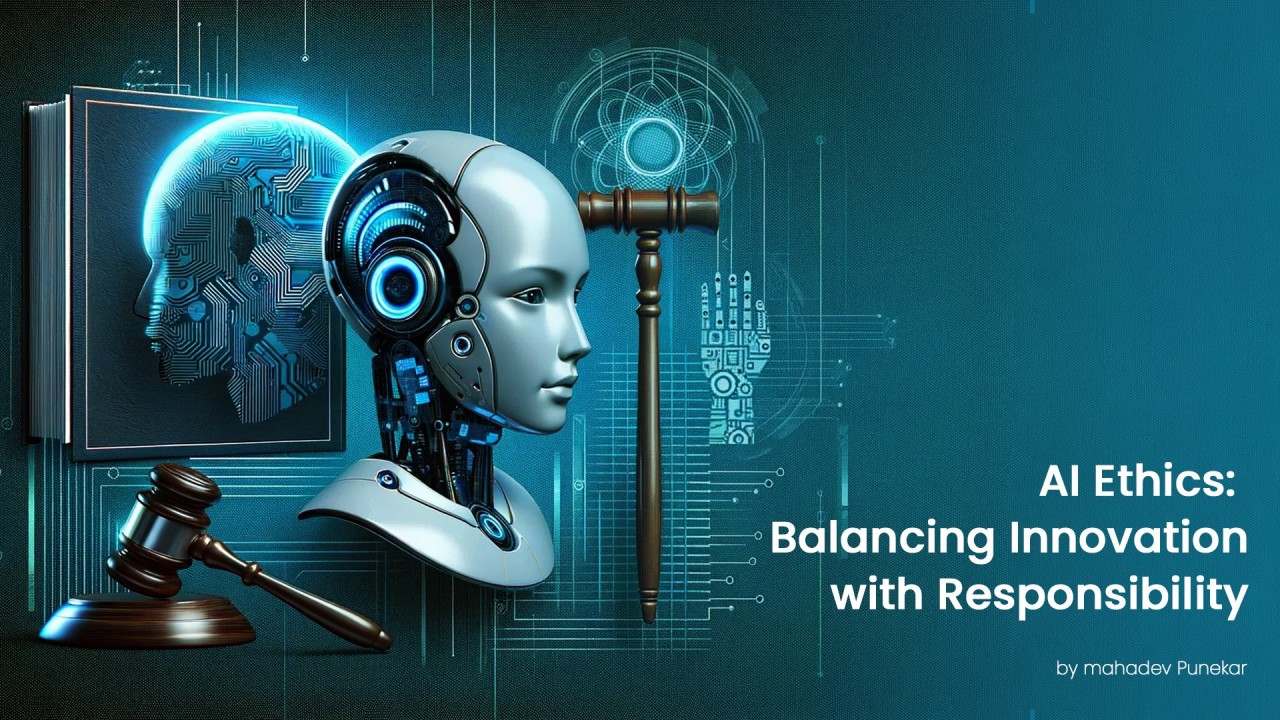
AI Ethics: Balancing Innovation with Responsibility
Mahadev Punekar
CTO at Assimilate Technologies | Driving Digital Transformation | Shaping the Future of Fintech & ERP Solutions | Innovator in AI/ML, DA & Blockchain | Driving Strategic Growth
As the Chief Technology Officer (CTO) of Assimilate Technologies, I’ve had the privilege of witnessing how artificial intelligence (AI) is reshaping industries at an unprecedented pace. From automating complex business processes to unlocking deeper insights through data analytics, AI holds the potential to revolutionize the way we operate. However, with great power comes great responsibility, and one of the most critical aspects of AI innovation today is ensuring it is done ethically.
As we approach GITEX 2024, where technology leaders, innovators, and decision-makers from across the globe converge, it’s crucial that we not only discuss the potential of AI but also address the ethical considerations surrounding its deployment. In this blog, I will explore the key ethical concerns of AI, including bias, transparency, and accountability, and offer use cases that demonstrate the importance of these principles.
1. Bias in AI: The Challenge of Fairness
One of the most significant ethical challenges in AI is bias. AI systems are trained on vast amounts of data, and if this data is skewed or reflects historical prejudices, the AI models may inherit and amplify these biases. This can lead to unfair outcomes, particularly in areas such as recruitment, loan approvals, or criminal justice.
For example, consider a recruitment AI designed to screen candidates for a company. If the training data contains biased hiring patterns from the past—favoring one gender, ethnicity, or educational background—the AI system may replicate those biases, unfairly filtering out highly qualified candidates. This is not only an ethical problem but also a missed opportunity for businesses to diversify their talent pool.
Use Case: A large retail company implemented an AI-based hiring platform to streamline its recruitment process. After several months, they noticed that the system disproportionately rejected female candidates for technical roles. Upon review, it was found that the AI model had been trained on historical data from a male-dominated tech industry, inadvertently perpetuating gender bias. By integrating bias detection mechanisms and re-training the AI with more balanced data, the company was able to rectify the issue and ensure a fairer recruitment process.
2. Transparency: Building Trust in AI Systems
Another cornerstone of AI ethics is transparency. AI systems often operate as “black boxes,” meaning their decision-making processes are opaque and difficult to understand. This lack of transparency can be problematic, particularly in high-stakes environments such as healthcare or finance, where decisions need to be explainable and accountable.
Transparency is essential not only for building trust with users but also for regulatory compliance. In sectors like finance and healthcare, where strict regulations govern operations, businesses must ensure that AI systems are auditable and that decisions can be traced back to clear, understandable logic.
领英推荐
Use Case: A financial services company introduced an AI model to assess loan applications. However, customers began to raise concerns when loan rejections lacked clear explanations. To address this, the company implemented an AI system with explainability features, allowing customers and regulators to understand the reasons behind each decision. This transparency not only helped rebuild trust with customers but also ensured compliance with emerging AI regulations.
3. Accountability: Who’s Responsible for AI Decisions?
As AI systems take on more autonomous roles in decision-making, the question of accountability becomes critical. When an AI system makes an erroneous or harmful decision, who is held accountable? Is it the developer who designed the algorithm, the business that deployed it, or the AI itself?
Establishing accountability is particularly important in industries where AI decisions can have life-altering consequences, such as healthcare diagnostics, autonomous vehicles, or legal judgments. Organizations must clearly define who is responsible for AI decisions and ensure that there are robust mechanisms for oversight and redress.
Use Case: In the healthcare industry, a hospital adopted an AI system to assist in diagnosing patients. However, an incorrect diagnosis led to a patient receiving the wrong treatment. The hospital quickly realized that, while the AI was a valuable tool, the responsibility for the final decision must remain with human healthcare providers. The AI system was reconfigured to serve as an advisory tool, with doctors retaining the final decision-making authority.
Striking the Balance Between Innovation and Responsibility
AI is one of the most transformative technologies of our time, and its potential to drive innovation is immense. However, with this potential comes the responsibility to ensure that AI is developed and deployed ethically. By addressing bias, ensuring transparency, and establishing accountability, we can harness the power of AI while safeguarding fairness, trust, and responsibility.
At GITEX 2024, where the world’s technology leaders will gather, it’s essential that we continue the conversation about AI ethics. As innovators, we must commit to building AI systems that are not only cutting-edge but also uphold the highest standards of ethical responsibility. The future of AI is not just about what it can do but also about how we shape it to create a better, more equitable world.
Let’s ensure that as we innovate, we do so with the responsibility that reflects our collective commitment to a future where technology serves humanity ethically and fairly.